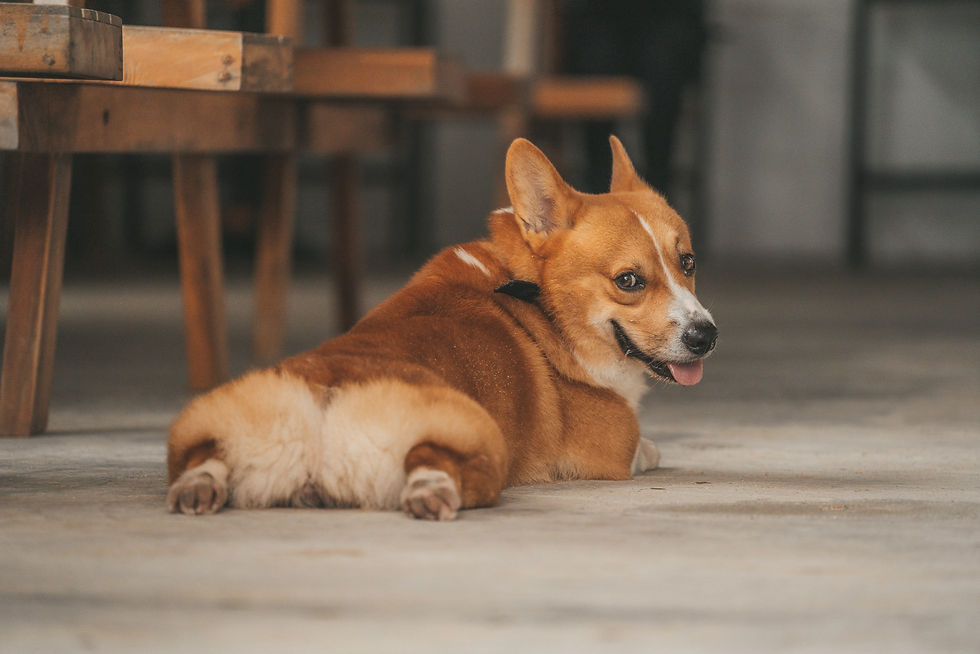
About the Breed: Pembroke Welsh Corgi
Breeds
The Pembroke Welsh Corgi is a strong, athletic, and lively little herding dog.
History
The Pembroke breed originated in Wales where they have been used as herding dogs, family companions and guardians of the farm. It is believed that their ancestry dates to at least the tenth century.
They may have descended either from the Vallhunds, Swedish cattle dogs brought to Pembrokeshire by the Vikings, or from the ancestors of the present-day Schipperkes and Pomeranians brought to Wales by Flemish weavers.
Corgis were recognized as purebred dogs in the United Kingdom in the 1920s. In 1934 the English Kennel Club recognized the Pembroke and Cardigan Corgis as separate breeds. The American Kennel Club recognition of the two distinct breeds also occurred in that same year The world’s most famous Pembroke Corgi fan was Queen Elizabeth II, who got her first Pembroke, Dookie, in 1933.
Personality
Pembrokes are strong, athletic, and lively little herders. They love physical activity and are happiest when they have a job to do. As they were bred specifically to move cattle, they are fearless and independent.
Pembrokes are built long and low but have powerful legs, muscular thighs, and a deep chest that equip them for a hard day’s work. They are surprisingly quick and agile, and can benefit from moderate daily exercise to maintain their physical and mental health. However they're best for on long walks or slow jogs, since their short legs won’t allow them to keep up with a bicycle rider or runners.
Pembrokes are bright, sensitive dogs who enjoy play with their human. They are an affectionate and companionable breed.
They are vigilant watchdogs, with acute senses and a ‘big dog’ bark.
Pembrokes often have a mind of their own, but they are energetic, willing, and highly intelligent partners who respond well to positive, reward-based training.
Pros
-
Incredibly loyal and loving.
-
Generally willing to please and learn quickly.
-
Fun-loving family dog.
-
Overall healthy breed.
Cons
-
Can be barky.
-
Need to be watched carefully for developing obesity. Added weight can be an extra strain on their long low back.
-
Need consistent training. They can be manipulative and will take charge if left to their own devices. Training must be with positive methods as they are sensitive and will shut down with negative techniques.
Best With
-
Families who can meet their need for activity and togetherness.
-
People who are willing to commit to provide regular, consistent training using only positive reinforcement.
Not For
-
Inactive owners.
-
People who are not willing invest in training.
-
People who live in an apartment or have no yard.
-
People who need to leave their dog alone all day.
More Info

Pembroke Welsh Corgi Seattle Purebred Dog Rescue

Pembroke Welsh Corgi Seattle Purebred Dog Rescue

Pembroke Welsh Corgi Seattle Purebred Dog Rescue

Pembroke Welsh Corgi Seattle Purebred Dog Rescue
Characteristics
Size:
Females:
Average 10-12 inches at the shoulder, and roughly 25-28 pounds.
Males:
Average 10-12 inches at the shoulder, and roughly 27-30 pounds.
Color:
The outer coat is red, sable, fawn, black and tan with or without white markings.
Energy Level:
Pembrokes have a moderate energy level but require daily exercise for mental health and weight control.
Life Expectancy:
On average, 11 to 14 years.
Children:
Pembrokes are generally gentle and playful with children. However, when excited they may tend to nip at heels in play.
Other Animals:
They are generally good with other dogs and pets.
Abilities:
Pembrokes excel in agility, flyball, tracking, and herding, but are not known for doing as well in the very formal competition obedience ring.
Shedding/Grooming:
Their medium length, somewhat coarse coat requires weekly brushing to remove dead hair. Shedding is average, but it increases during late spring/early summer.
Health:
They are an overall healthy breed, with hip dysplasia, degenerative myelopathy, and eye conditions being the main health issues.
Their “long and low” body style also makes them susceptible to back issues. As they age, they may need assistance in jumping down off the bed or couch and being careful with stairs.
